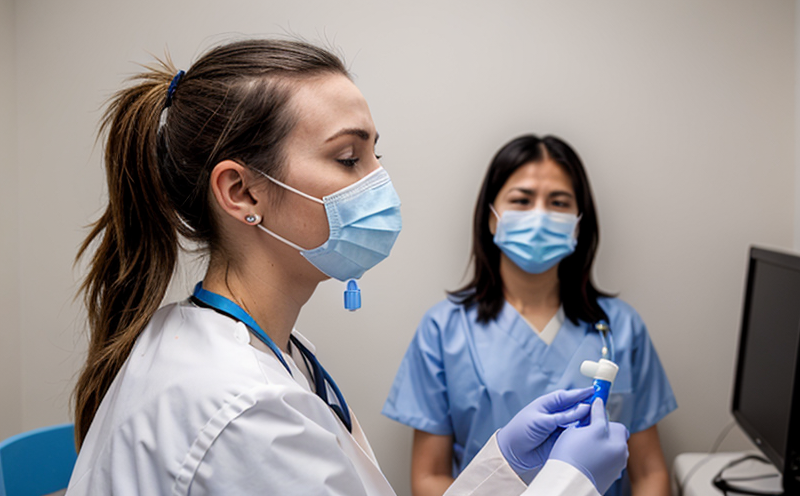Bioaerosol Respiratory Risk Testing in Hatcheries
In the poultry industry, bioaerosols play a critical role in maintaining optimal conditions and ensuring high standards of hygiene. Bioaerosols are airborne particles that can contain microorganisms such as bacteria, viruses, fungi, and other allergens. These particles can have a significant impact on respiratory health, especially when present in large quantities or under poor ventilation conditions.
Hatcheries are particularly vulnerable to bioaerosol-related issues due to the high concentration of birds, their immune systems still developing, and the close proximity that facilitates rapid spread of pathogens. Bioaerosols can compromise air quality, leading to respiratory diseases among the chicks and potentially affecting productivity rates in hatcheries.
Understanding and mitigating bioaerosol risks is essential for ensuring a healthy environment within hatcheries. This testing service focuses on identifying and quantifying airborne particles that pose potential health hazards, thereby enabling hatchery operators to implement targeted interventions and improve overall air quality.
The process involves the collection of samples from various locations within the hatchery using specialized sampling devices designed to capture bioaerosols accurately. These samples are then analyzed in our accredited laboratory using advanced analytical techniques such as quantitative PCR (qPCR), real-time PCR, and other microbiological methods approved by international standards like ISO 14695:2013.
The results provide actionable insights into the presence and concentration of specific pathogens or allergens, allowing hatchery management to address these issues proactively. This service is particularly beneficial for maintaining regulatory compliance and ensuring public health safety.
Our team of experts works closely with clients to develop tailored testing protocols that align with their unique operational requirements. By providing comprehensive data on bioaerosol levels, we empower hatchery operators to make informed decisions regarding ventilation systems, cleaning schedules, and other hygiene practices.
Why It Matters
The importance of addressing bioaerosol respiratory risks in hatcheries cannot be overstated. Respiratory diseases caused by airborne pathogens can lead to significant losses in productivity, increased mortality rates among chicks, and higher veterinary costs for the hatchery. Poor air quality also affects worker health and safety, creating a less efficient working environment.
Regular testing helps identify potential sources of contamination early on, enabling timely interventions that prevent outbreaks. By establishing baseline levels of bioaerosols under different conditions (e.g., during cleaning versus normal operation), hatcheries can better manage their facilities to maintain optimal hygiene standards.
Moreover, compliance with industry regulations and best practices is crucial for maintaining a competitive edge in the marketplace. Consumers today are increasingly concerned about food safety and ethical farming practices, making it imperative that hatcheries adopt stringent quality assurance measures. Our testing service ensures adherence to these standards while fostering trust among stakeholders.
Scope and Methodology
The scope of our bioaerosol respiratory risk testing in hatcheries encompasses the identification, quantification, and characterization of airborne particles that could pose health risks to both birds and humans. We utilize a multi-faceted approach involving sampling strategies tailored to specific areas within the hatchery.
- Sampling locations may include brooding areas, feeding zones, chick transfer points, and ventilation systems.
- We employ high-volume air samplers equipped with filters that capture bioaerosols over specified periods (typically 24 hours).
- The captured samples are transported to our accredited laboratory where they undergo rigorous analysis using methodologies compliant with ISO standards.
Our team of microbiologists and epidemiologists interpret the results, providing detailed reports that include concentrations of various pathogens detected along with recommendations for improvement. These insights help hatchery managers prioritize critical areas requiring attention based on risk factors identified during testing.
Use Cases and Application Examples
- Hatchery Clean-Up Assessments: Post-cleaning evaluations to ensure all pathogens have been eliminated from the environment.
- New Facility Commissioning: Initial assessments before operational use to establish a baseline for future monitoring.
- Disease Outbreak Investigations: Rapid identification of bioaerosols linked to specific outbreaks aiding in containment efforts.
- Seasonal Monitoring Programs: Periodic checks throughout the year to track changes in air quality and adapt cleaning schedules accordingly.
These use cases highlight how our testing service supports hatchery management at various stages of facility lifecycle—from planning through operation. By leveraging this data, hatcheries can proactively manage bioaerosol risks while enhancing overall operational efficiency.





